Mary Lynn Everson
Greg Halvorsen Schreck
Chicago, Illinois, United States
Established in 1987, Chicago’s Heartland Alliance Marjorie Kovler Center transforms the lives of individuals recovering from the complex consequences of torture. The Kovler Center provides medical, mental health, and social services; trains and educates locally and globally; and advocates for the end of torture worldwide.
The following images depict survivors of torture and their advocates, originally presented in the form of a quilt. The Kovler Center draws upon community resources to empower survivors of politically sponsored torture to use their strengths to regain independence and control over their lives and restore personal integrity. Approximately 350 individuals from 60 countries are served annually with culturally sensitive and specialized care. In part because of the diversity of the clientele and the paradigm of “triple trauma” (trauma from torture, migration, and acculturation), the Kovler Center not only embraces, but encourages alternatives to traditional Western interventions. They continually seek effective ways to support expression to facilitate healing.
Constructing the quilt
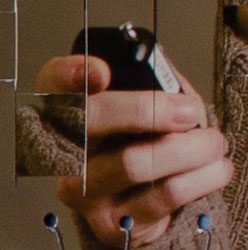
We had discussed possible photography projects for years. However, the need for survivor confidentiality made conventional documentary approaches impossible. Instead of a traditional documentary project, too often cementing images of individual victims, we decided to use an approach that visualized a community of survivors. Through a collaborative group project, we were able to create a process that promoted dialogue and understanding between survivors, students, and staff members. We all wanted to create an image of a supportive community that would present survivors with dignity and beauty. Posing torture survivors for photographs might reiterate the problem of someone exerting control over them, so we allowed each person to depict themselves in ways that offered self-expression, autonomy, and anonymity. The basic set consisted of a computer monitor next to a camera, allowing the subject to see each image on the screen as it was made. Most importantly, we gave them a remote control to make their own self-portraits. We wanted the survivors to see themselves in community—in solidarity with case workers and other service providers—so the Kovler Center staff participated as well.
After making photographs to their satisfaction, the survivors were invited to choose two photographs that they liked the best. The images were cropped into squares and printed on-site. The photographs were then cut into strips and woven back together. The editing and weaving process allowed the participants another way to alter their identity, as needed. They could control exactly how they would appear. Finally, the completed squares were sewn together to create a quilt. Students were responsible for various parts of the collaborative process: helping with the camera; editing, cropping, and printing the images; cutting the images and weaving them back together; troubleshooting and overseeing the visual design of the quilt; and sewing the quilt together. The production room was festive and energetic, with students, survivors, and Kovler Center staff working together in various combinations. The quilt was reinforced and finished at Wheaton College.
The participants’ response was overwhelmingly positive:
“They did the worst things to me, the worst. I have scars all over from where they hurt me. I thought I didn’t have a body anymore . . . I brought my therapist with me, and then I felt okay. I made some pictures, and I started feeling happy. I could do it by myself, without the therapist anymore. I liked the pictures I saw. I started moving and having fun.”
“I realized that I could have a body again; I could be in my body. I could move. I realized I could have a life here. I could start again. I felt like I was a model, that I was beautiful.”
“After what they did to my body, I never knew I could feel this way again.”
“You made me beautiful . . . I am beautiful!”
“I felt immortal.”
A non-traditional intervention, the finished quilt has proven to be uplifting, empowering, and transformative, beyond what any of us could have imagined. Something magical and healing occurred when survivors took the remote control in their hands, determined how to pose their own bodies, and decided when and how their image was to be recorded.
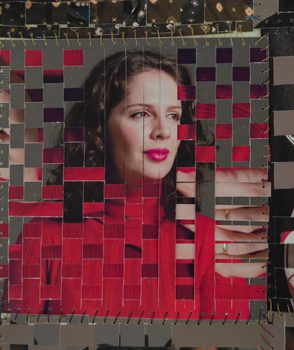
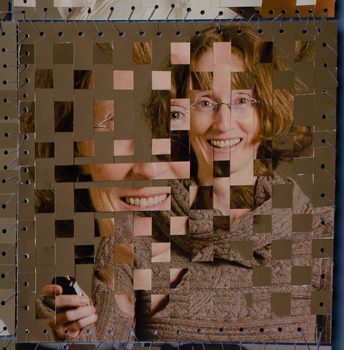
Staff at Heartland Alliance Marjorie Kovler Center as they originally appeared in the quilt
Images and the uncertainty of the Internet
The nature of torture “recovery” requires sensitivities that might not be logical to those of us who live in relative safety. We decided upon a method, previously described, after an extensive dialogue with the various workers at the Kovler Center. We wanted each person to feel safe and in control. That said, the Kovler Center staff and I were unsure whether the quilts could ever be seen in public. Conventional wisdom suggests that identifying someone who was tortured could be problematic on a number of fronts.
After the first quilt was finished in 2010, we gathered the participants to discuss these issues. We were surprised when nearly all of the survivors signed releases for us to exhibit the quilts. Moreover, most of them wanted to be identified by name and country; some of them commented that they were “proud” of their pictures and that they even felt “beautiful.” A few participants however had second thoughts about having their image displayed in a gallery. We replaced their images with others that were released. Two more of the participants whose asylum cases were pending needed to have their images covered. The quilts were exhibited at Schneider Gallery in Chicago at the beginning of 2012.
We decided, despite the belief that a number of survivors would have given consent, against publishing online any identifiable images of the survivors displayed in the original quilt. The survivors represented in here come from myriad countries, each representing a complex situation that drove the survivor to seek asylum in the United States. While, for some survivors, publication might have been therapeutic, it was simply not possible to anticipate the multitude of unwanted consequences stemming from the publication of their images online. In this age of global surveillance, the potential undesired result of reproducing any image should give the reader pause—considering the impossibility of controlling those reproduced on the Internet.
Given this reality, we chose to reproduce details extracted from the quilts. These details demonstrate the method and construction of the quilt. They also introduce viewers to an aura around those who participated. Fragments of clothing, gestures, and body parts communicate the story of a community of individuals living in our midst, a community of individuals recovering from trauma that most of us find unimaginable. Perhaps these details bring us closer to their reality than the original pictures do.
Click on any image to enter the gallery
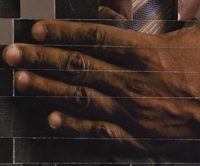
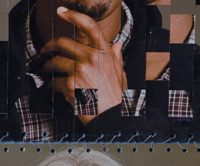
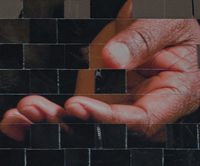
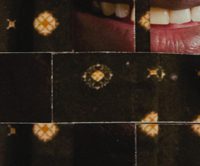
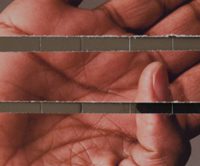
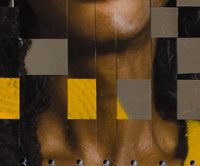
Afterword: A cautionary tale
The night before we met with the survivors to unveil the first quilt, I was up late preparing for something I no longer recall. I did have the Kovler Center on my mind; we were considering writing a grant for the project so we could continue. Yet we were not sure whether we could even send the pictures for consideration.
In an effort to stay awake, I turned on the television to Without a Trace, a show about missing-persons detectives. In the episode I distractedly watched, a character had been relocated as part of a witness protection program after he had testified in an organized crime investigation. The character inadvertently walked through some story being filmed for the evening news, accidentally making his image public. He was identified by the wrong people, and they tried to assassinate him.
The timing of the story sobered me. It reminded me that there could be more at stake regarding the project we had completed. It also made me realize that as an “image professional” I need to anticipate certain issues regardless of consent. Regardless of our experience as a survivor or an advocate, we cannot always be certain of the power or consequences of publicly-revealed images.
—Greg Halvorsen Schreck
MARY LYNN EVERSON, MS, LCPC, is the senior director of Heartland Alliance Marjorie Kovler Center. As senior director, Mary Lynn’s vision is aligned with Marjorie Kovler Center’s three-part mission. Her clinical focus is on improving access to services and outcomes for torture survivors and their families. Her focus in training is to increase education locally and globally regarding torture treatment. Her advocacy efforts focus on support for torture treatment centers, changes in legislation affecting torture survivors, and ending torture worldwide. Mary Lynn has a Master of Science in counseling psychology from George Williams College and over 30 years experience in community mental health, including 15 years developing and managing trauma treatment programs at Heartland Alliance and five years as the Marjorie Kovler Center senior director. She has a lifelong passion for photography.
GREG HALVORSEN SCHRECK has taught in the Art Department at Wheaton College, near Chicago since 1989. His undergraduate degree is from Rochester Institute of Technology, where he studied both commercial and fine art photography. After working in commercial photography in New York City for ten years, Greg completed his graduate work at New York University and the International Center of Photography in 1988. His photography is connected to the land, environmental concerns, and human rights issues. In the last decade, Greg has spent much of his time exploring to the epistemological shift from analog to digital photography. This year he unveiled wooden Lambertian portrait photographs, the result of a long collaboration with physicist Mark Woodworth. For more information about his work, please visit his website Greg Schreck Photography.
Highlighted in Frontispiece Volume 4, Issue 2 – Spring 2012

Leave a Reply